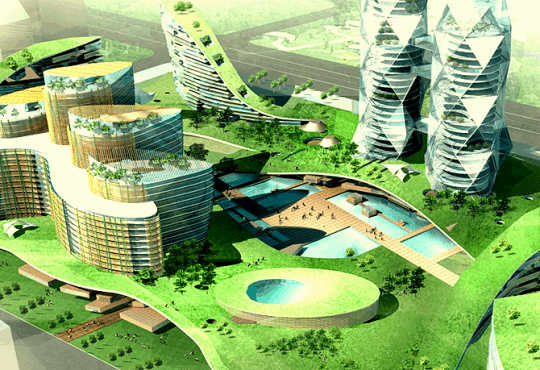SMART CITIES AND THE INTERNET OF THINGS: CHANGING THE FOUNDATION OF HOW WE LIVE
Delivering value that exceeds the sum of its parts, smart cities will help us along the road to utopia. We will be able to address the key challenges of our day, issues like traffic congestion, outdated utility infrastructure, safety, the expense of healthcare, our education crisis, and our increasing demand for energy. That’s the promise of IoT when applied to smart cities — not simply adding more technology to our lives, but enabling a new and fully integrated approach to how we design and develop cities moving forward.
But making that promise real takes more than vision. We don’t get all this for free. As a piece in the Harvard Business Review states in “Hard Questions on Our Transition to Driverless Cars,” there are major changes we’ll need to make to our infrastructure to enable autonomous driving. Imagine that goods at ports could be moved off boats and onto trucks that transport them hundreds of miles over dedicated highways to distribution hubs. Now imagine the changes this will require: changes to airports, parking, shipping, trains, ports, toll roads and our network of roads. This is just one application within the smart city. There are myriad ways IoT technology can fundamentally change the way we live — but only if we take on the tremendous task ahead of us to put that infrastructure in place.
Cities are increasingly the cornerstone of society as an ever larger percentage of the world’s population lives in cities. Thus, what happens in our cities literally drives our future. It changes the very landscape of our lives. Now is the time to begin the conversation for what we want that future to look like. Given the investments horizons of cities — in the order of 15 to 30 years — we need to develop a new approach to how we plan for the future. The master plans of even five years ago likely didn’t account for driverless vehicles or intelligent buildings to be possible in such a short time frame. We have to bring these plans up to date. Not only this, our approach must be flexible enough to accommodate the game-changing technologies that will surely arise in the next five to 15 years.
We also have to consider practical changes as we plan for the future. Fifteen years ago, the companies that predicted what the internet would do to commerce took the lead. We need to make predictions as well. We need to anticipate how the internet of things will change demand, pricing and usage patterns over the coming years, as well as our overall behavioral models of concepts like ownership and resource sharing. We need to consider the different ways the future might progress and how we can shift our plans accordingly. For example, who will build this infrastructure, who will own it and who will decide who can use it?
Finally, we need to always keep in mind the impact technology has on people. For most of us, it will make our lives better. Many, however, will find their traditional jobs disappear, which can be a frightening prospect. However, as with all major technology shifts, new industries and business models will arise that bring even more opportunity and prosperity. Therefore, to be inclusive and complete, our plans must include reskilling strategies and policies to accommodate individuals through the transition. We need to shift our mentality from viewing change as a threat to be opposed into an opportunity to be embraced.
For the opportunities are abundant. Smart cities give us the chance to positively impact our lives and the lives of every person on this planet to a degree never before possible. By looking ahead, we can plan for an ever-changing future with great efficiency and opportunity for all. It’s a tall task. It’s going to take time. It’s going to take vision and investment.
And it’s going to be amazing once we realize it.
All IoT Agenda network contributors are responsible for the content and accuracy of their posts. Opinions are of the writers and do not necessarily convey the thoughts of IoT Agenda.




